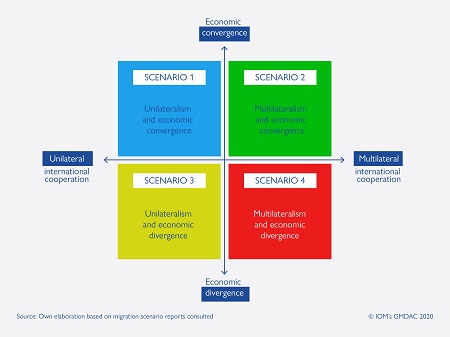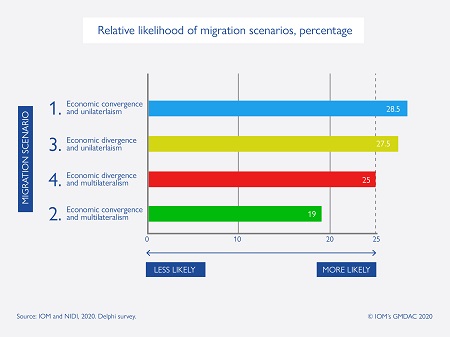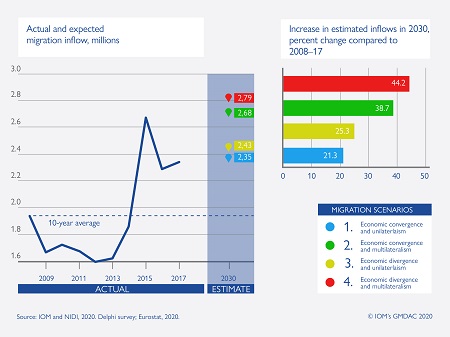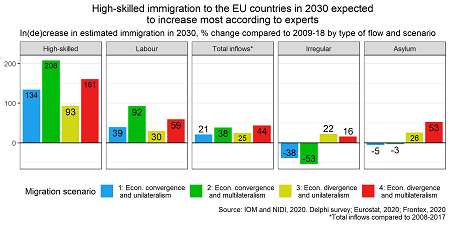What does international immigration to the EU countries looks like in 2030? How could different scenarios affect future immigration flows to the EU? The International Organization for Migration’s Global Migration Data Analysis Centre (GMDAC), in close coordination with the Netherlands Interdisciplinary Demographic Institute (NIDI-KNAW), consulted 178 migration experts before COVID-19. Explore the data ahead of the release of the study. Here are some key findings.
The economy and international cooperation between the EU and sending regions are the key drivers of migration to the EU in 2030.

Will migration governance become more unilateral in the future? Migration experts seem to believe so.

Experts associate a higher degree of international cooperation with higher levels of immigration. In contrast, less international cooperation is associated with lower levels of immigration.

Migration experts estimate large increases in labour migration to the EU, particularly high-skilled migration. The picture is more mixed in terms of future irregular and forced migration.

This project was made possible thanks to funding from the European Union’s Horizon 2020 research and innovation programme under grant agreement Ares (2017) 5627812-77012.
